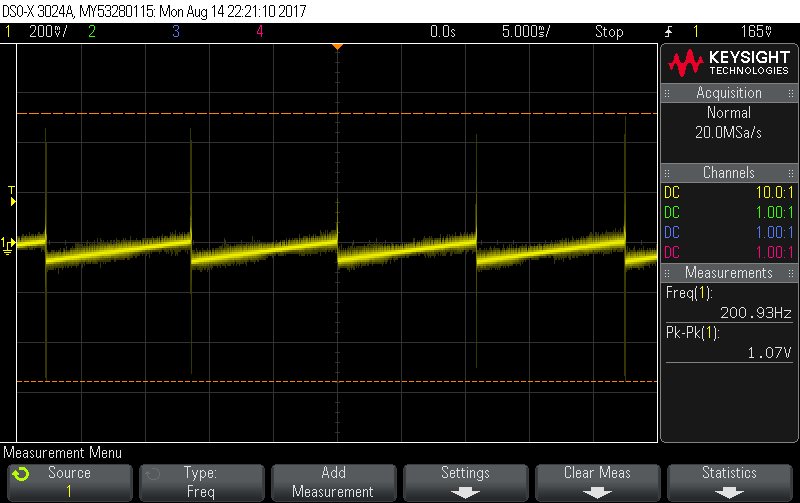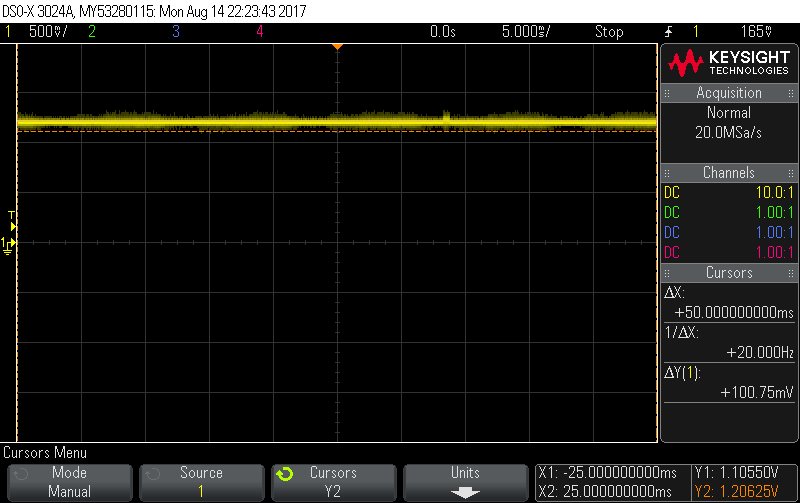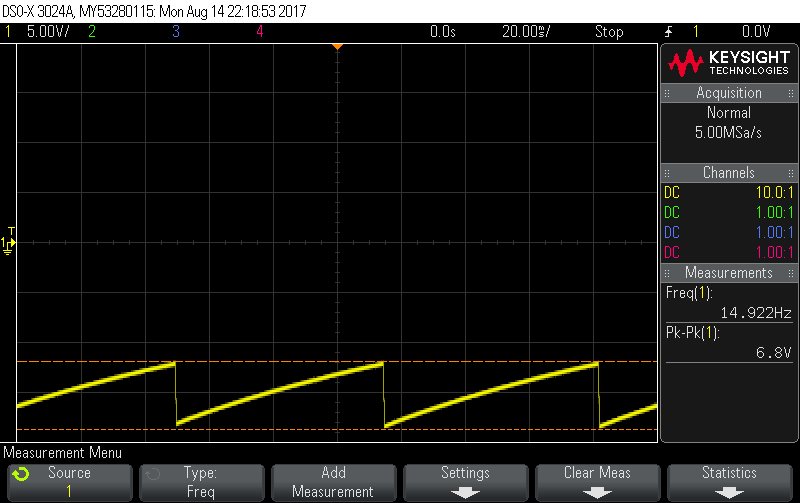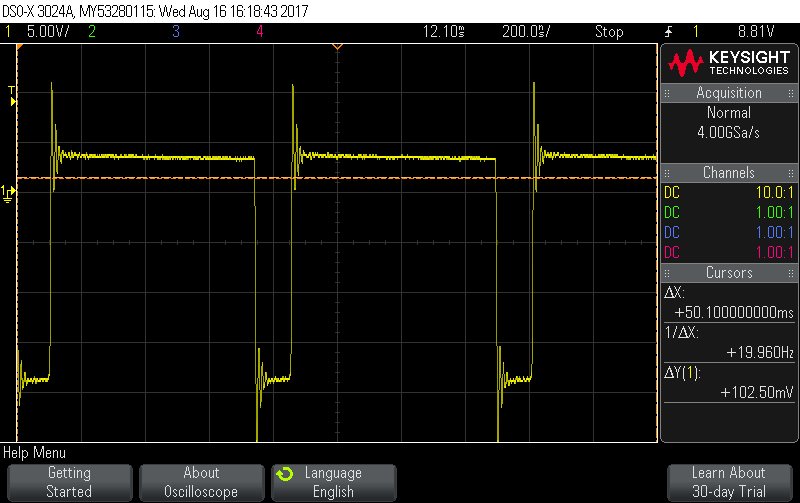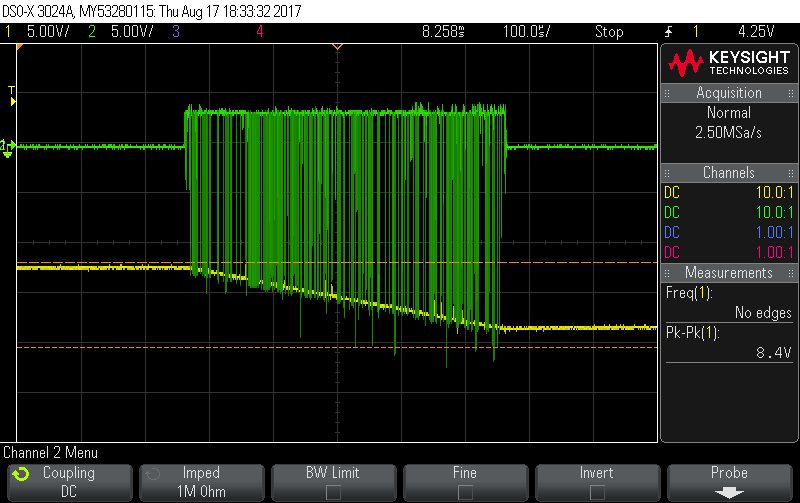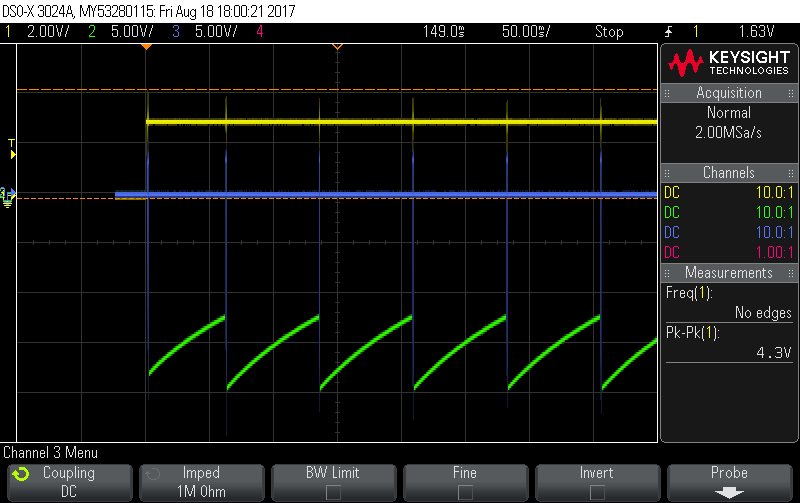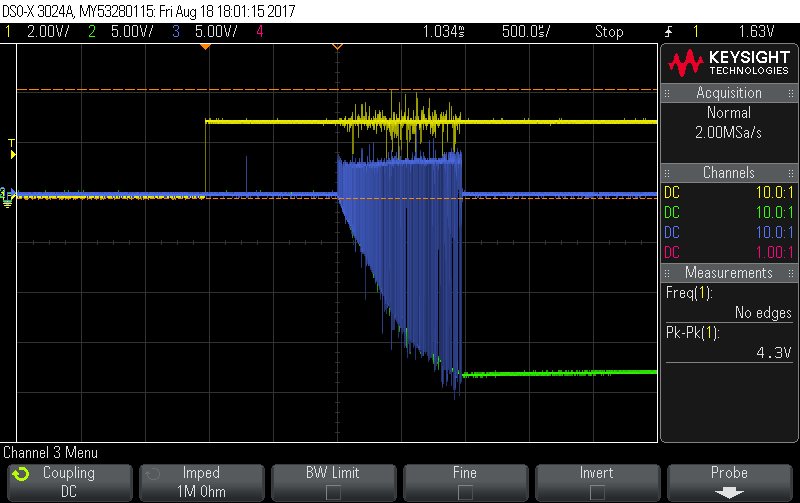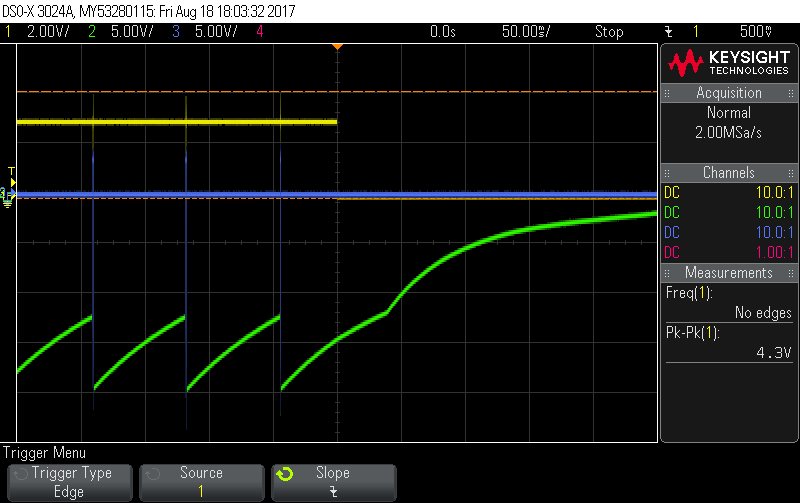Hi,
I have a problem with the negative output. Attached is the schematic (U79) and some pictures from the scope.
The scope results are with R2 = 100K and R4 = 100K as in the schematic.
Before that, by mistake, R2 was 75K giving a 18V at VPOS. So I replace it to the current value.
Is there a problem in the chip itself ?
Thanks
Noam
VREF
FBN
VOUT NEG


